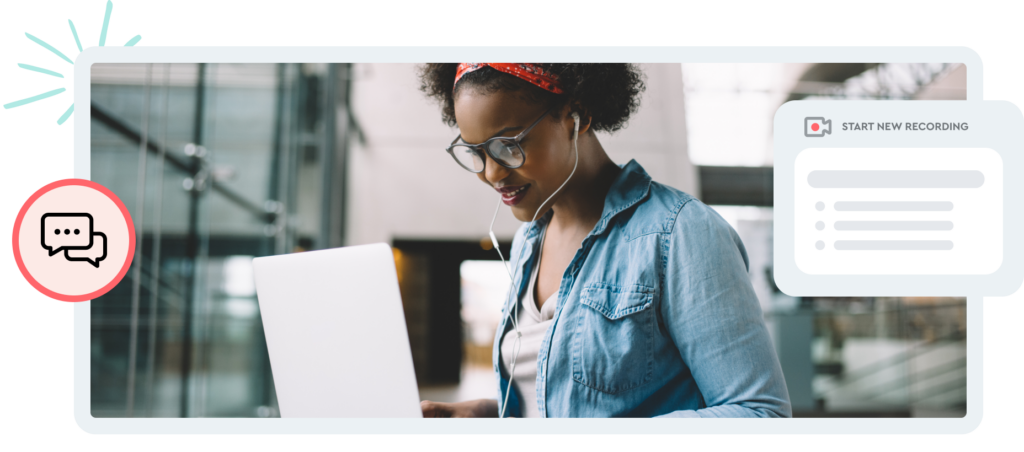Most courses are built around summative assessments: final exams, final projects and final opportunities to demonstrate an entire unit, semester or year’s worth of learning. The problem with this approach is its finality. Summative assessment evaluates the end of learning over time without contributing to the progression of learning over time.
In contrast, formative assessment not only measures but also helps improve learning and skill development throughout the term. Many instructors steer away from this approach because it’s too time-consuming or difficult to implement. A solution for both of these challenges is video.
Using formative assessment tools like video gives instructors a fast and flexible way to monitor student progress, and to facilitate student success through targeted feedback, personalised learning and self/peer evaluation so they know where to focus their efforts as they prepare for final exams.

Here are six ways to reframe assessment with video to ensure that every course offers the right mix of formative check-ins and summative evaluations to support learning over time.
1. Use remote observation to increase assessment frequency and to save time.
Observing and giving feedback on competencies takes more time than marking exams. That’s why presentations, performances and skills demonstrations are typically reserved for summative assessment.
Using video gives students in online and on-campus courses flexibility to practise, record and submit more frequent skills checks on any device (such as smartphones, tablets or laptops).
And because video can be observed asynchronously, instructors have flexibility to observe and evaluate student skills at a time and place that’s convenient for them, which saves time and money on travel to classrooms, labs or work experience and placement locations.
2. Sync video and feedback to help students improve.
End-of-term critiques on summative assessments are valuable and necessary, but they do little to move the needle on learning and skill development. A more effective approach is targeted feedback aimed at helping students improve throughout the term.
Giving time-coded feedback on formative video activities and online assessments allows instructors to pinpoint exactly how and where students need to improve. Connecting instructor critiques to precise moments in student videos puts feedback in context, and makes it more nuanced and understandable.
3. Deepen reflective practice through self-evaluation.
Video supports self-evaluation and reflection better than any other feedback and formative assessment tool because it enables students to watch their own performance from the perspective of a viewer rather than a presenter.
Giving students an opportunity to think critically about where they need improvement—by seeing what others see—is a simple yet powerful way to amplify formative assessment as a strategy for student success.
4. Take feedback and reflection further with peer review.
Going beyond instructor and self-evaluation, peer review allows students to work collaboratively and to learn from each other. It also increases both the quantity and diversity of feedback every student receives on their videos.
For students giving feedback, peer review requires them to reflect on their instructors’ expectations and assessment criteria, which improves their ability to give feedback and makes them more open to receiving it.
5. Reinforce best practice with stimulus or comment-only assignments.
While using video and feedback together is ideal for hands-on practice and skills demonstrations, it’s also effective for gauging students’ knowledge of best practice.
For example, with stimulus assignments, instructors create a video prompt and require students to record a response. With comment-only assignments, instructors share videos demonstrating best practice and assign students to watch and give feedback.
6. Provide objective evidence of student learning over time.
The first formative video assessment of the term can be used to establish a baseline for each student, enabling instructors to identify individual strengths and weaknesses. This provides a scalable way to support personalised learning, and to help each student focus on areas that need improvement during subsequent assessments.
By the end of the term, videos recorded by each student can be used to create e-portfolios that provide objective evidence of competence and present a clearer picture of student learning and skill development over time.
Video Supports More Frequent and More Effective Assessment of Skills and Competencies
As more programmes transition to hybrid or online formats, video enables students to practise and record skills anytime from anywhere, and for instructors to observe, evaluate and give personalised feedback asynchronously throughout the term.
With the added flexibility and time savings afforded by this approach, formative assessment is easier to implement and can be used more frequently, which increases the effectiveness of summative assessment.
Using video as formative assessment tools ensures that no one is surprised by final marks at the end of the term. It allows students to see how they’re performing from start to finish and gives instructors the power to intervene for those who are struggling or need more practice.









